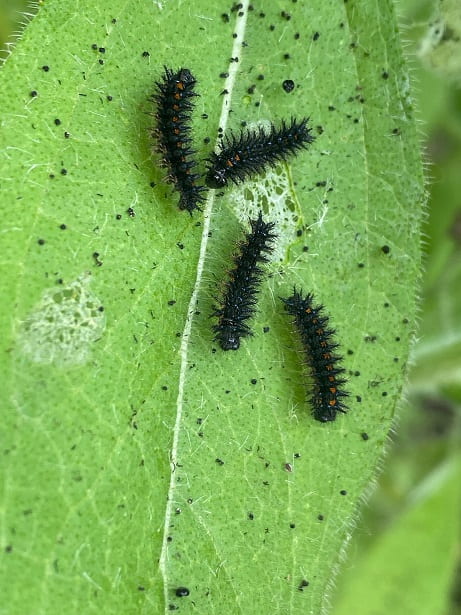–by Frannie Miller — Pesticide Safety & IPM Coordinator
This week I got the opportunity to visit a community garden to view the beautiful flowers and try to obtain some images of insects. It occurred to me that as an entomologist I often need to be a bit of a detective to discover who is feeding on what plant. It is possible to be deceived if we don’t take the time to take a closer look!
At first glance the Black Eyed Susan’s appeared to have a fuzzy web like appearance making a person think of a disease, but upon closer inspection I could tell they had been fed on by an insect. The image illustrates what I was seeing in the landscape. The leaves appeared fuzzy because something had skeletonized the leaves and left behind their frass, which is characteristic of some type of caterpillar.
Caterpillar Feeding
Upon closer inspection, I was able to find the culprits feeding on the plants in groups as shown in the second image. It is important to remember that the larval stage can be difficult to identify as there are not as many identification guides available. In this case, I determined them to be Variegated Checkerspot caterpillars.
Checkerspot Caterpillars
Since caterpillars can be vary host specific sometimes what type of plant they are found on will give you a clue as to what they are! I recommend using a notebook or your phone to take notes of where the insect was found, on what type of plant, and to make a note of any identifying features. A magnifying glass may help you be able to identify key characteristics. The camera on your phone can be used to take a clear photo, which can then be identified later. An image can be worth a thousand words and is a lot easier to identify from than a description. Just some items to think about as you explore the outdoors this summer.

